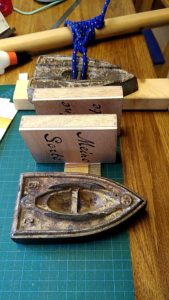These are crazy times. Crazy, with a capital C, or maybe with all capital letters. But anyway, even though it's all crazy, and even though we don't know how things will develop from now onwards (at least not in the medium run, it's pretty clear what will happen here in Germany in the next two or three weeks), a bit of optimism might be what we all need.
So. I'm very, very excited to announce that we will try to have a European Textile Forum this year! If all goes well enough, we will meet in Tilff-Méry, Belgium, from August 9 to August 15.
Our focus topic this year will be "Sticks and Stones May Make a Loom", and we will explore weaving techniques and possibilities on "primitive" looms during the Forum week.

If you're a weaver, or a researcher, and that sounds interesting for you, you can find out more about it on textileforum.org, where there's the Call for Papers and the registration form online now.
So. I'm very, very excited to announce that we will try to have a European Textile Forum this year! If all goes well enough, we will meet in Tilff-Méry, Belgium, from August 9 to August 15.
Our focus topic this year will be "Sticks and Stones May Make a Loom", and we will explore weaving techniques and possibilities on "primitive" looms during the Forum week.

If you're a weaver, or a researcher, and that sounds interesting for you, you can find out more about it on textileforum.org, where there's the Call for Papers and the registration form online now.











 Pressing with weights until the glue has set...
Pressing with weights until the glue has set...